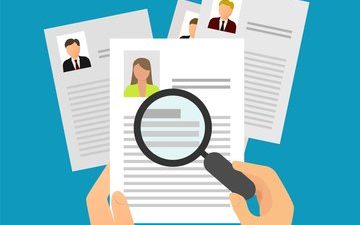
Adapting and evolving: Reflections on simulated interviews in the creative industry
Introduction, ‘Description’:
In this blog, I will expand on the learning and development the simulated interviews prompted and how I plan on utilising the information gained in developing my career opportunities. I will expand upon how my experience in this situation relates to the reflective learning diagrams spoken about in my previous blog post. As well as how the reflective practices I’ve learnt throughout the module have benefitted me through this exercise for completing future interviews to a high standard.
Like in my first blog post, Gibb’s reflective cycle (Figure 1): (Gibbs, G. (1988). Learning by doing: a guide to teaching and learning methods. London: Further Education Unit.) will be a useful example of how I can use my simulation as a learning experience that can positively influence future employment interviews. Dewey reminds us that ‘We do not learn from experience. We learn from reflecting on experience.’ (John Dewey, (2003) How we Think New York: Dover, p 78) this is important to remember when reflecting on the interview as in that moment the pressure of the situation means reflection in action is unattainable. Instead, I will use the method of reflection after action to ensure I can fully learn from the experience as a whole. The beginning stage of description aligns with the preparation work that I completed, assessing and writing out the questions I would ask my group members. Feelings and evaluation stages reflect the simulation interview itself and immediate verbal feedback

For the simulation interview, I chose to join the creative industries group as I felt this aligned best with what I hoped to apply for in the future. I shared with my group the job pack for a project assistant for a local theatre company, Comedia of Errors. This is a job I applied for before the exercise began as they provided a detailed job pack, so when submitting the job pack to be used in the group there was a good base to work off. These preparations align with the ‘description’ section of the development cycle, as I clearly laid out the role outline and began working on methods we had learned through our module around creating a solid base to extend upon once I got to the interview stage.
In preparation for the simulation, I constructed a detailed CV specifically catered to the job pack provided. I used a method of highlighting the job pack and making sure I used specific criteria/language to ensure that my CV resonated well with the job description. I had the CV reviewed in a meeting with the careers team and this was extremely beneficial to receive feedback based on a professional viewpoint before using it to prepare for the simulation. This became a very good reflective process of evaluating my previous experiences, and allowing me to visualise situations I could discuss within the interview, for example, an equipment improvement that my show reports had picked up on. Linking these to the cycle they allowed space for both evaluation and analysis to prompt a positive outcome of a professional CV that can be utilised repeatedly in the future.

Conducting the Interviews…
In preparation for conducting the simulated interviews, I reviewed the job packs for the rest of the group. Due to the mix of skills presented within the group, each question I made up had to cater to the job description for each of the situations. I began piecing together complex and detailed questions that allowed both the interviewee to excel in evaluating their skills as well as challenging their on-the-spot thinking skills during the interview. For each job description provided, I wrote three different questions, including open-ended questions and specific examples, to have more options and control on the day of the interviews. We were advised to lay out our questions in a professional manner, beginning with a simple open question such as: what drew you to apply for this job? This was to allow for the interviewee to relax into the conversation, and slowly build up the detail and their confidence. Then we progressed to more complex questions that needed an example-based response such as, ‘Can you give us an example of when you have used your problem-solving skills to resolve a situation?’. These proved helpful in finding the anecdotal example and subsequent solution that presents the candidate in the best light. This element of conducting the interview falls well into the ‘feelings’ and ‘evaluation’ areas of the cycle as the feelings occurring during the interviews and then the initial verbal feedback from the group was a useful tool for reflecting on the usefulness of the simulation. It was beneficial to conduct the interview, to give a much better understanding of the mindset of an interviewer. Understanding the formality and layout of the interview was interesting to see from both sides as we tried to format each interview in a way that both allowed us to be in control of the conversation while still allowing for a high level of detail in the response of each group member. Overall I believe this was one of the most beneficial aspects of this exercise as it allowed for a clear perspective of the process.
‘Feelings’ in the hot seat…
During the interviews, I felt nervous about engaging with the on-the-spot thinking, the simulation would cause. Also, upon reflection, I believe I had a level of self-conscious concern about relaying my experience coherently and clearly. Ann Cleary reminds us that “Reflection is not easy and as it involves looking at ourselves it is not uncommon for it to generate a level of discomfort.” (Reflection – Reflective Practice – LibGuides at Dundalk Institute of Technology) this is something that resonated deeply with my feelings around reflecting on this activity as I found it uncomfortable and also frustrating, often reflective in a negative light upon details that I missed or different answers that would’ve fit the questions better. At the moment I also tried to bear in mind the STAR technique (Situation, Task, Action, Result: Figure 2) which is a good memory mnemonic, it allows you to explain concisely while still ensuring I have answered with enough detail. For example, I was asked the question: Describe a time you had difficulty communicating with someone and how you overcame that? I explained the situation of a technical malfunction (Situation) and my role as a stage manager working on tabs (Task) and how I had to make a quick on-the-spot decision to close the curtains (Action) and run to the tech box to communicate the issue resulting in a false start that actually had a positive outcome in the audience’s relationship with the singer (Result) due to the quick response from my team. Having the ability to reflect on this experience through reflective diagrams such as the Gibbs cycle means the details can be reflected positively. These techniques that I used to analyse the process after completion and work on improved versions of my answers fall into the ‘conclusion’ and ‘action plan’ aspects of the process. Therefore, the reflection provides the most accurate method of improvement for the future. In reflection this exercise allowed me to collect all my ideas and experiences into one clear place. While also allowing me to refine and practice clearly stating my experiences.

‘Conclusion’ evaluating this process as a whole:
Overall, the exercise allowed me to build confidence and develop my understanding of future situations and how my CV would look and read for a future employer. It has allowed me to refine and practice my skills and answers based on the professional style questions, therefore giving a more realistic answer rooted in my experiences as shown through my use of the STAR technique in my answers. This section allows me to reach the point in the cycle of an ‘action plan’ as I plan for preparing future job opportunities within the arts industry. Being able to reflect and practice these elements of the process will be useful to positively influence my future opportunities. The solid foundation of knowledge and confidence I have built through this exercise and my previous work experience will allow me to utilise this opportunity to its full potential.